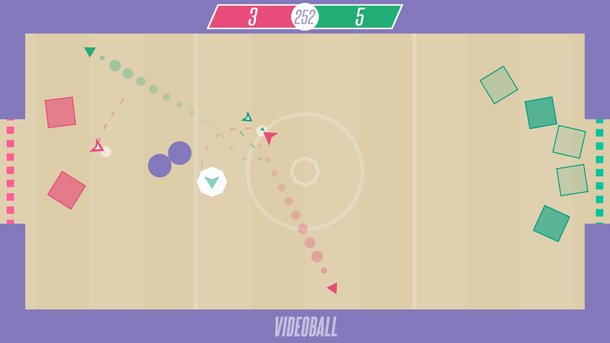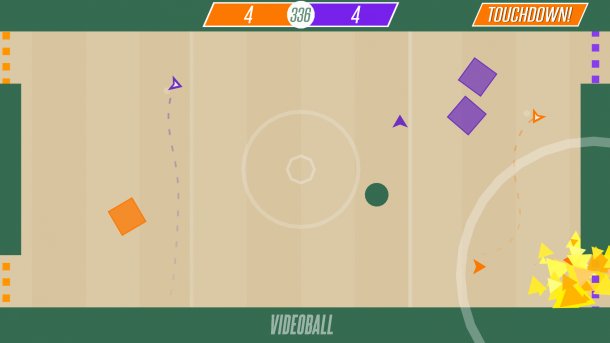Hands-on with Videoball: a local multiplayer electronic sport for the living room

It's been two weeks since I played Videoball, and I still think about it at least once a day. The game has been playing on repeat in my brain for two reasons. One: it's that addictive sort of fun that makes you want to play just one more round. Two: Videoball and some other games coming out this year, like Hokra and Towerfall , have me more excited than I've ever been about local competitive PC gaming.
Videoball's designer Tim Rogers calls it "an abstract minimalist electronic sport," and an early trailer for the game describes it as "casual enough for a child's birthday party, hard enough to televise in prison." Both of these statements sound silly, but they're also true. Videoball is one of those games that you look at and go "Hmm. Okay. Looks fun, I guess?" And then you play it, and you go " Oh ," and then you don't want to stop until you've mastered it.
I knew I liked Videoball's minimalist aesthetic and peppy music and chirpy sound effects, but had no idea how it would really feel to play. Textures are nowhere to be found in Videoball—the art is all solid colors and basic geometric shapes. The "players" on the field are simple triangles that harken back to the ship from Asteroids. The ball, which you try to knock into the other team's endzone, is a simple circle. Blocks, which are used to block the ball, are simple squares.
" Oh " was the response I had once I played Videoball, because I realized its minimalism extends beneath its colorful skin. Minimalism is the guiding force behind Videoball's design, and the game wields simplicity like a machete. Its controls (a single analog stick handles motion, a single button does everything else) and straightforward goal (knock a ball into the other team's endzone) slice away the hundred hour learning periods of competitive games like League of Legends .

"It started out as a dare between my friend Bennett Foddy who made the game QWOP ," Rogers said. "We were talking about making minimalist, one button Starcraft. I must've made 40 or 50 prototypes of one button Starcraft...none of those turned into anything that I would be willing to show anyone else. So then it's like, well, why not put an analog stick in there? Why not make it so you can move the thing around?"
That's more or less how Videoball became a minimalist sports game, though Rogers noted that it played more slowly at the start—more like a strategy game—and morphed into the fast-paced game we played.
Or, as Tim Rogers explained through analogy, "There's a fine balance between making this game Mario Party-ish and making it Bomberman-ish. Making it friendly to somebody who just wants to party, and friendly to somebody who wants to get real mad at a party."
The biggest gaming news, reviews and hardware deals
Keep up to date with the most important stories and the best deals, as picked by the PC Gamer team.

Wes has been covering games and hardware for more than 10 years, first at tech sites like The Wirecutter and Tested before joining the PC Gamer team in 2014. Wes plays a little bit of everything, but he'll always jump at the chance to cover emulation and Japanese games.
When he's not obsessively optimizing and re-optimizing a tangle of conveyor belts in Satisfactory (it's really becoming a problem), he's probably playing a 20-year-old Final Fantasy or some opaque ASCII roguelike. With a focus on writing and editing features, he seeks out personal stories and in-depth histories from the corners of PC gaming and its niche communities. 50% pizza by volume (deep dish, to be specific).

